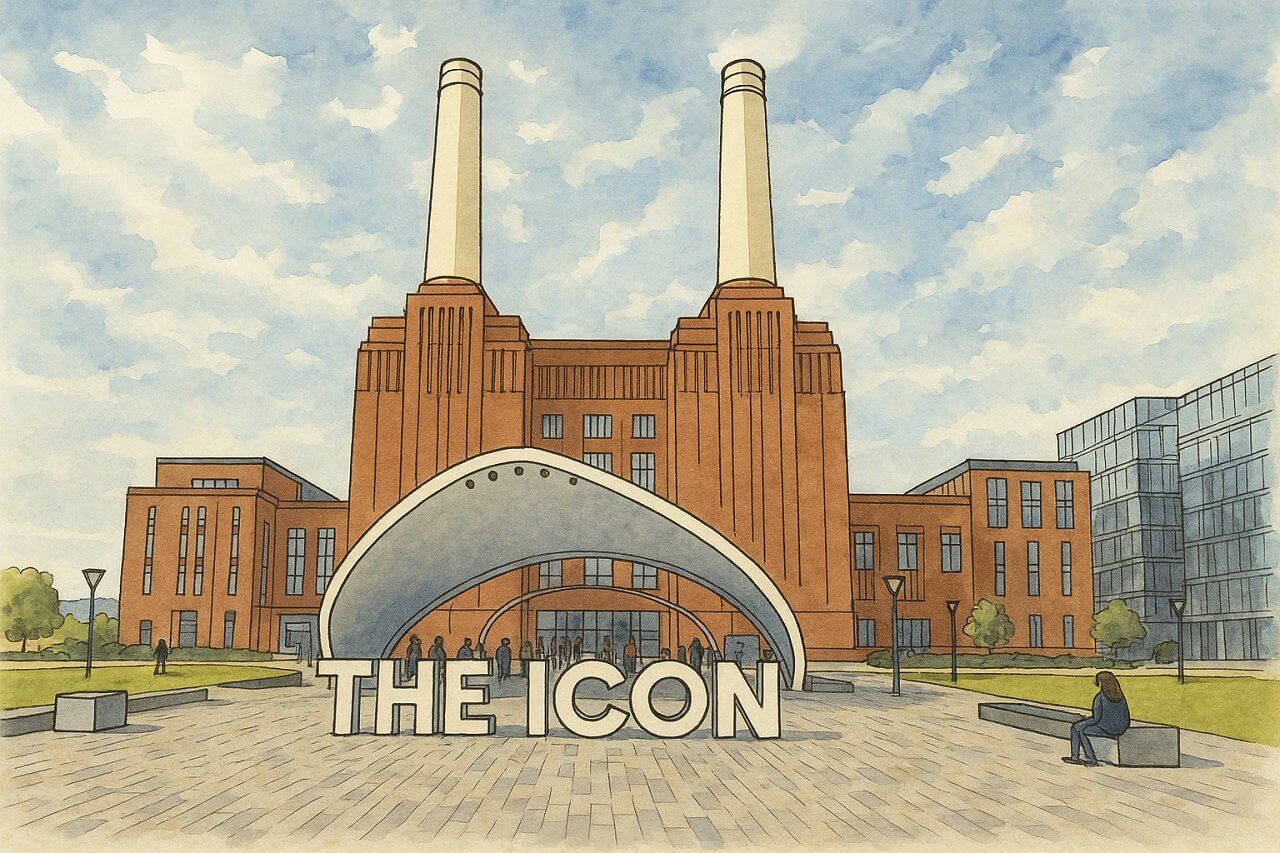
Battersea Power Station, London
Battersea Power Station (GPS: 51.48202, -0.14449) is one of London's most distinctive and recognisable landmarks, located on the south bank of the River Thames in the heart of Nine Elms, Battersea, within the London Borough of Wandsworth.
With its unmistakable four chimneys and Art Deco design, the station was once a cornerstone of Britain’s industrial might. Today, it stands as a striking symbol of regeneration, home to shops, restaurants, offices, residences, and public spaces.
The History of Battersea Power Station
Originally constructed in two phases, Battersea Power Station was built between 1929 and 1955. Designed by architect Sir Giles Gilbert Scott, it became a shining example of 20th-century industrial architecture.
The station comprised two parts: Battersea A (completed in 1935) and Battersea B (completed in 1955), forming the now-famous symmetrical layout with four chimneys. At its peak, the station provided electricity to over a fifth of London, making it one of the most significant power plants of its time.
After decades of operation, the power station was decommissioned in 1983, and the site stood derelict for many years—despite its Grade II* listed status and recurring redevelopment attempts that never materialised.
Restoration and Rebirth
Following a series of failed redevelopment efforts, a major breakthrough came in 2012 when a Malaysian consortium (SP Setia, Sime Darby and the Employees Provident Fund of Malaysia) acquired the site and committed to a full-scale restoration.
The £9 billion project has transformed the decaying shell into a vibrant mixed-use neighbourhood, while preserving the historic structure’s character and detail. Battersea Power Station officially reopened to the public in October 2022, 39 years after its closure, with the interiors beautifully restored to reflect the site's industrial heritage.
Among the new additions are glass elevators inside one of the chimneys, dubbed "Lift 109", offering panoramic views over London.
Retail and Anchor Brands
The restored power station contains three main levels of shopping—Turbine Hall A, Turbine Hall B, and a mezzanine level—each blending industrial architecture with modern retail design.
There are over 100 retail units inside Battersea Power Station, with a curated mix of global brands, independent boutiques, and flagship stores.
Anchor tenants and popular brands include:
- Zara – multi-storey flagship store
- Uniqlo
- Apple – corporate London headquarters inside the station
- Nike
- Hugo Boss
- Ralph Lauren
The station also features over 20 restaurants, cafés, and bars, ranging from casual street food outlets to fine dining experiences.
How Far from Charing Cross?
Battersea Power Station is approximately 3 miles (4.8 km) from Charing Cross by road.
Depending on traffic, the drive takes around 20 to 30 minutes. The journey provides scenic views along the Thames and through Westminster, especially if coming via Chelsea Bridge or Vauxhall Bridge.
Getting There by Public Transport
There are several convenient options for reaching Battersea Power Station by public transport:
- Tube: Battersea Power Station is served by the Northern line, thanks to the 2021 extension from Kennington. The station is Zone 1 and just minutes from central London.
- Bus: Multiple bus routes serve the area, including routes 44, 137, 452, and 344.
- River Bus: The Thames Clippers river bus stops at Battersea Power Station Pier, providing a scenic route from the City or Canary Wharf.
- Train: The nearby Battersea Park and Queenstown Road stations offer frequent Overground and National Rail services.
Here's how it fits into the line:
- Kennington - where the extension branches off from the original Northern Line.
- Nine Elms - the first new station on the extension.
- Battersea Power Station Underground Station - the end of the extension and the southernmost station on this branch.
There’s also ample cycle parking and a Santander Cycles docking station, making cycling a convenient option.
Fun Facts About Battersea Power Station
- The building famously appeared on the cover of Pink Floyd’s 1977 album Animals, complete with a floating pig balloon between the chimneys.
- It has been featured in numerous films, including The Dark Knight, Children of Men, and Fast & Furious 6.
- "Lift 109" is a glass elevator inside the northwest chimney that ascends 109 metres for breathtaking 360-degree views.
- It is now home to Apple’s UK headquarters, making it one of the tech giant's most architecturally unique offices.
- The site includes over 4,000 new homes, a hotel, and a six-acre riverside park open to the public.
Quick Facts Box
| Feature | Details |
|---|---|
| Location | Battersea, South London (Borough of Wandsworth) |
| Construction | Phase A: 1929–1935, Phase B: 1951–1955 |
| Decommissioned | 1983 |
| Restoration | 2012–2022 |
| Reopened | October 2022 |
| Shopping Levels | 3 (Turbine Hall A, B, and mezzanine) |
| Total Shops | 100+ outlets |
| Anchor Tenants | Zara, Apple, Uniqlo, Nike, Ralph Lauren |
| Distance from Charing Cross | 3 miles / 4.8 km |
| Nearest Tube | Battersea Power Station (Northern line) |
| River Bus Access | Battersea Power Station Pier |
| Unique Features | Lift 109, Apple HQ, riverside park |
| Fun Fact | Appeared on Pink Floyd’s “Animals” album cover |
Battersea Power Station is  on the Map of the London Borough of Wandsworth
on the Map of the London Borough of Wandsworth

Painting of Battersea Power Station, London (View image in full size)